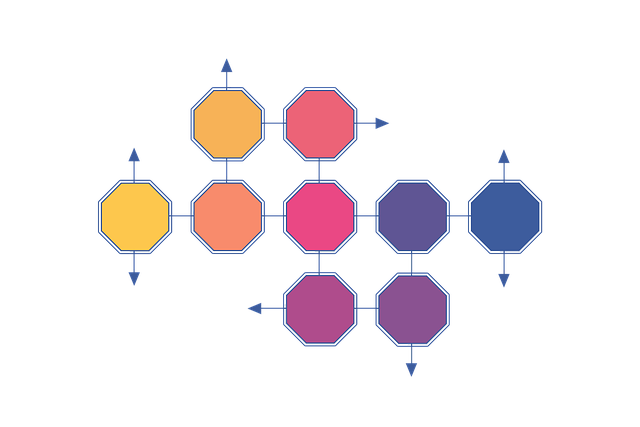Landing page analytics is vital for digital marketing success. By analyzing user behavior through metrics like conversion and bounce rates, businesses optimize strategies, improve UX, and drive growth. Integrating CRM data enables targeted retargeting campaigns, fostering customer connections and increasing conversions. This data-driven approach ensures effective KPIs and informed decisions, making landing page analytics a game-changer for online campaign optimization.
In today’s digital landscape, landing page analytics are crucial for any smart retargeting strategy. Unlocking insights from key metrics like bounce rates and conversion paths helps understand user behavior on landing pages. By segmenting audiences based on these insights, businesses can tailor effective retargeting campaigns. Optimizing these campaigns with data-driven decisions leads to higher engagement and improved ROI. Measuring success through defined KPIs ensures every click and visit contributes to business growth, transforming landing pages from static destinations into dynamic tools for targeted marketing.
- Unlocking Insights: Key Metrics to Track
- Understanding User Behavior on Landing Pages
- Segmenting Audiences for Effective Retargeting
- Optimizing Campaigns Based on Data
- Measuring Success: Defining ROI and KPIs
Unlocking Insights: Key Metrics to Track

Unlocking valuable insights from landing page analytics is a game-changer for any smart retargeting strategy. By delving into the data, businesses can uncover critical metrics that provide a clear picture of user behavior and engagement. The key lies in tracking essential factors such as conversion rates, bounce rates, and average session durations. These metrics offer a deep understanding of how well your landing pages are performing and identifying areas for improvement.
For instance, monitoring the CRM data alongside marketing analytics can reveal powerful connections. Understanding which campaigns or sources drive the most conversions enables marketers to optimize their efforts. Moreover, reputation management is also enhanced through these insights, allowing businesses to quickly address any issues that may cause users to abandon pages, thus ensuring a positive user experience and encouraging future interactions.
Understanding User Behavior on Landing Pages

Understanding user behavior on landing pages is a cornerstone of effective digital marketing strategies. Landing page analytics tools provide invaluable insights into how visitors interact with your website, enabling marketers to make data-driven decisions that optimize conversion rates. By analyzing metrics like bounce rates, click-through rates, and time spent on the page, businesses can identify areas for improvement and tailor their messaging to better resonate with target audiences.
This deeper understanding of user behavior allows for the creation of smarter retargeting campaigns. For instance, if analytics reveal high interest in a specific product feature, marketers can leverage this knowledge in follow-up WhatsApp marketing efforts or missed call text back strategies through CRM systems. Such personalized approaches not only enhance engagement but also increase the likelihood of conversions, ultimately driving business growth and profitability.
Segmenting Audiences for Effective Retargeting

In the realm of digital marketing, effective retargeting strategies are key to converting interested users into loyal customers. Landing page analytics play a pivotal role in this process by providing invaluable insights into user behavior and preferences. By segmenting audiences based on data derived from landing pages, businesses can tailor their retargeting efforts with precision. This involves categorizing visitors into distinct groups based on demographics, past interactions, or specific interests revealed through their browsing patterns.
For instance, a retail website can use landing page analytics to identify two segments: “High-value customers” who frequently make purchases and “Occasional browsers” who only visit occasionally. Subsequently, the team can employ CRM systems integrated with social media marketing automation tools to craft personalized retargeting campaigns. The former segment might receive exclusive offers via email, while the latter could be engaged through targeted ads on social media platforms, fostering a more meaningful connection and increasing the chances of conversion.
Optimizing Campaigns Based on Data

In today’s digital landscape, landing page analytics are not just a tool but an essential strategy for businesses to optimize their online campaigns. By delving into the data provided by analytics tools, marketers can uncover valuable insights about customer behavior, conversion rates, and drop-off points on specific pages. This information is crucial for refining marketing strategies and ensuring each campaign hits the mark. For instance, understanding which elements of a landing page resonate with the target audience allows for the creation of more effective calls-to-action (CTAs) and content placements.
Through advanced analytics, businesses can identify areas for improvement and make data-driven decisions. This might involve tweaking page design, optimizing text message marketing campaigns to align with customer preferences, or leveraging marketing automation tools to personalize user experiences. Marketing analytics thus becomes a game-changer, enabling smart retargeting strategies that resonate with potential customers on a deeper level.
Measuring Success: Defining ROI and KPIs

Measuring success is a vital aspect of any retargeting strategy, and landing page analytics play a pivotal role in defining it. When evaluating the effectiveness of your retargeting campaigns, establishing clear Key Performance Indicators (KPIs) is essential. These metrics should align with your business goals and provide a comprehensive view of customer behavior on your landing pages. For instance, if your primary objective is to drive conversions, KPIs such as conversion rate, cost per acquisition, and return on investment (ROI) become critical metrics. ROI, in particular, allows you to assess the profitability of your retargeting efforts by comparing revenue generated against marketing spend.
Defining ROI involves a careful analysis of landing page analytics, including data like click-through rates, time spent on the page, bounce rates, and completion rates of specific actions. For example, if you’re utilizing marketing automation tools or AI chatbots on your landing pages to recapture audiences who left without converting, tracking missed call text-back rates or chatbot engagement can provide valuable insights. These analytics offer a deeper understanding of user interactions, enabling data-driven adjustments to your retargeting strategies and ensuring that your campaigns remain tailored to the target audience’s needs and preferences.
Effective retargeting strategies rely heavily on robust landing page analytics. By tracking key metrics, understanding user behavior, segmenting audiences, optimizing campaigns based on data, and measuring success with defined ROI and KPIs, businesses can enhance their marketing efforts and maximize conversions. Implementing these strategies leverages valuable insights from landing page analytics to create targeted campaigns that resonate with visitors, ultimately driving better results in the digital landscape.
